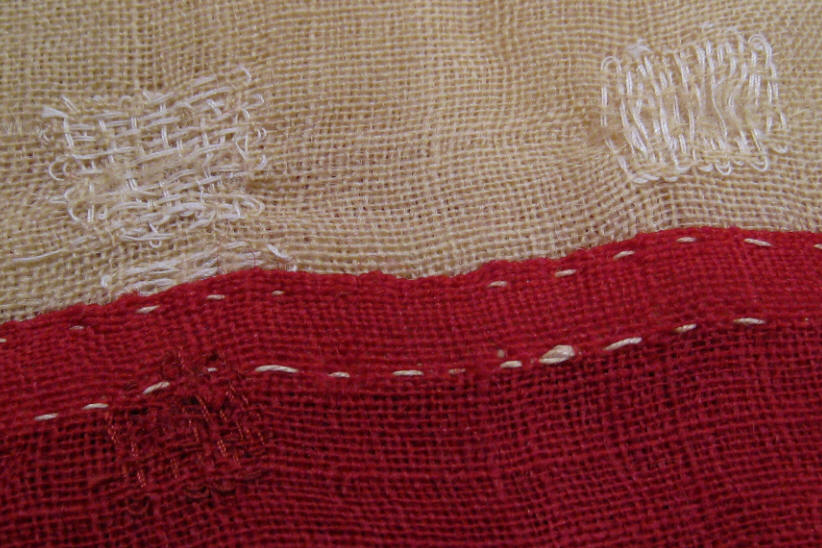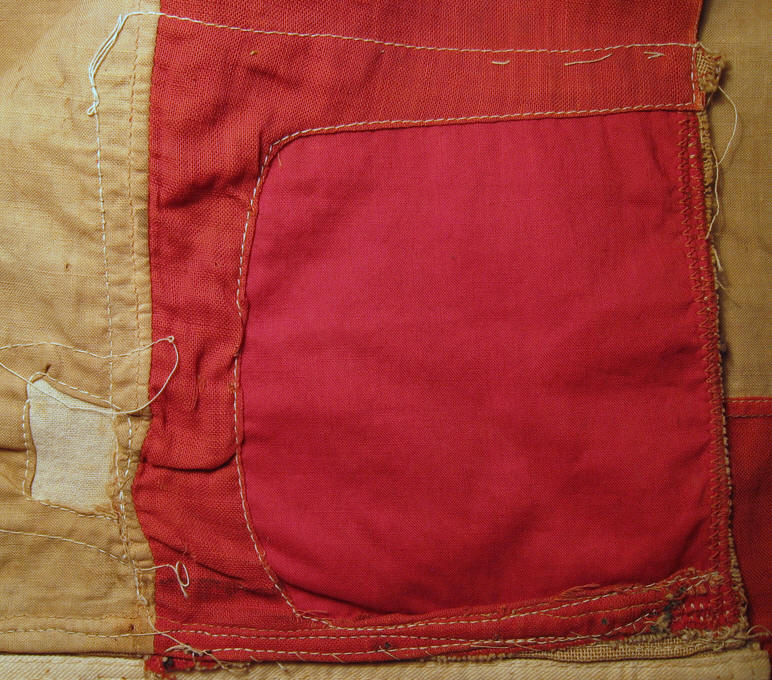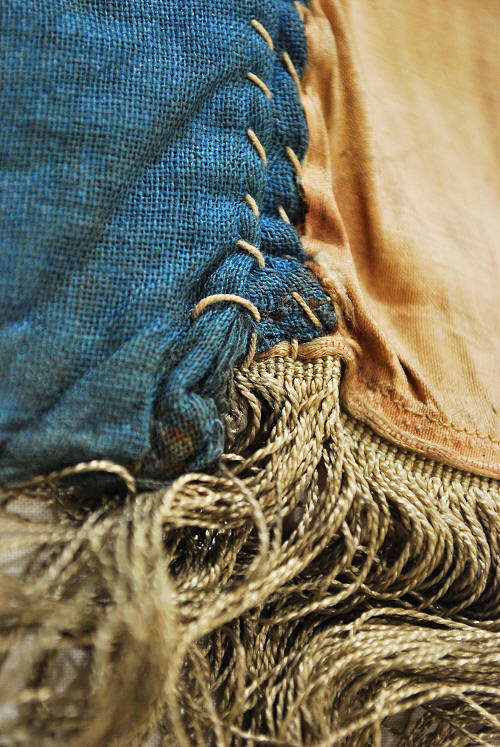Americans have always cherished
their flags. Flags are passed
down from generation to generation.
An official American flag is always
official, and can be flown proudly
at any time. They are never
retired or become obsolete.
Unlike today, where people routinely
visit their local hardware store and
simply purchase a new, mass produced
American flag once their current
flag becomes damaged or
unserviceable, early American flags
were often repeatedly repaired and
updated over years or even
decades of use. More often
than not, antique American flags
show evidence of repairs. I
suspect this is because the fact
that these flags have even survived
is indication that those who cared
for the flags over generations were
also those most likely to make
repairs to their flags in order to
ensure their survival. Some
flags show evidence of being
repaired over and over. These
repairs are more than just a
curiosity. They add tremendous
character to these antique flags,
and more importantly, they are the
personal handiwork of those
generations past that made these
flags and their descendents who
continued to cherish them.
The
nature of the repairs depends on the
type of material from which the flag
is constructed, and the type of
damage the flag has sustained.
Below are some common examples of
repairs made on various types of
antique American flags.
|
Wool Darning
 |
Darning of a Wool Flag,
circa 1845. One
way of repairing holes in
wool bunting is the
technique of darning.
To make the repair, thread
is woven through the
existing fibers of the wool
fabric creating a hand-made
fabric weave that closes the
hole. The process is
very laborious, but the
repairs are strong and
lasting. Look closely
at the large photo of this
very early American flag.
The areas of the red and
white stripes that look
discolored are actually not
discolored. They are
areas of literally hundreds
of very small darned holes,
made with thread selected to
match the original fabric of
the flag. |
 |
|
Patching
 |
Patching, Early 20th
Century. Here we
see areas of patching and
reinforcement to the one
corner of this early 20th
century 48 star flag.
In each of the corners of
this flag there are patches
applied, and in some cases,
patches on patches, with
combinations of machine
stitching and hand
stitching, evidence that the
flag was lovingly cared for
over many years. |
 |
|
Stitching and
Re-stitching
 |
Re-stitched Split Seam,
circa 1861.
This
close up photograph shows a
hand stitched repair made to
the seam where the sleeve
hoist of
this flag attaches to its
bottom red stripe. In stitched
repairs, no replacement
fabric is added to the flag.
Instead, the split is simply
rejoined. This
particular repair on this
particular flag, the battle
flag for Company L, 102d
Pennsylvania Volunteer
Infantry, is especially
touching in that it was most
likely made by a Union
soldier, perhaps the unit
color bearer, while the flag
was carried in the field
during the Civil War. |
 |
|
 |
Next:
Civil War Flags |
 |
|

